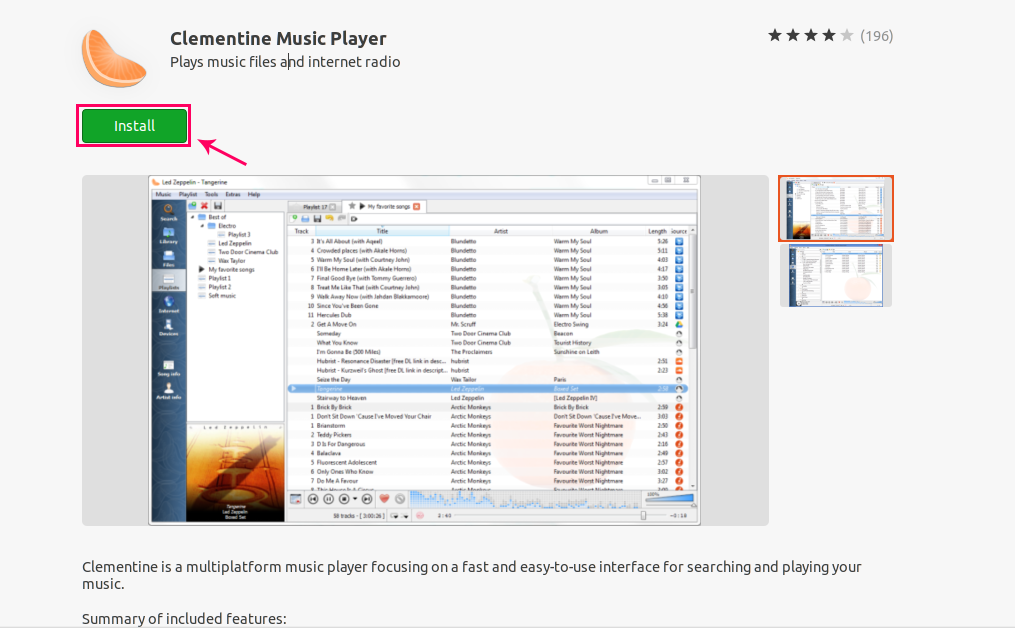

Although VLC is one of the finest video players on the Linux market (it’s my default), it does suffer from some minor limitations with audio-namely the lack of playlists and the inability to connect to remote directories on your network. For KDE Neon users, VLC serves as your default for both music and video playback. In fact, VLC does a great job of playing audio files. However, VLC isn’t limited to the playback of video. VLC Media Playerįor some, VLC cannot be beat for playing videos. Although Rhythmbox does offer a slightly more modern interface than Clementine ( Figure 2 ), it’s not quite as flexible.įigure 2: The Rhythmbox interface is simple and straightforward. The Rhythmbox playlist feature isn’t quite as powerful as that found in Clementine, but it still makes it fairly easy to organize your music into quick playlists for any mood.

One very nice feature found in Rhythmbox is plugin support, which allows you to enable features like DAAP Music Sharing, FM Radio, Cover art search, notifications, ReplayGain, Song Lyrics, and more. Rhythmbox offers gapless playback, Soundcloud support, album cover display, audio scrobbling from Last.fm and Libre.fm, Jamendo support, podcast subscription (from Apple iTunes ), web remote control, and more. That doesn’t mean the app is bereft of features.

The Rhythmbox interface is slightly more modern than Clementine and takes a minimal approach to design. Rhythmbox is the default player for the GNOME desktop, but it does function well on other desktops.
CLEMENTINE MUSIC PLAYER PLUGIN SOFTWARE
If your music collection is large, and you want total control over it, this is the player you want.Ĭlementine can be found in the standard repositories and installed from either your distribution’s software center or the command line. Although it may not enjoy a very modern interface, it is absolutely unmatched for its ability to create and manipulate playlists. It also includes one of the finest equalizers you’ll find on a Linux music player (with 10 bands to adjust). Of all the music players I have used, Clementine is by far the most feature-rich and easy to use. Play local music or from Spotify, Last.fm, and moreīuilt-in audio transcoding (into MP3, OGG, Flac, and more)Įasy creation of regular and smart playlistsįigure 1: The Clementine interface might be a bit old-school, but it’s incredibly user-friendly and flexible. The feature set is seriously impressive and includes the likes of:Ĭustomizable interface (display current album cover as background - Figure 1 )
CLEMENTINE MUSIC PLAYER PLUGIN FOR MAC OS
Clementine is a fork of the new defunct Amarok music player, but isn’t limited to Linux-only Clementine is also available for Mac OS and Windows platforms. Clementine offers probably the single best ratio of ease-of-use to flexibility you’ll find in any player. I wanted to start out with the player that has served as my default for years.

Let’s take a look at a few such players, to see which one might suit your needs. In fact, there are quite a few, most of which are open source and available for free. If your music format of choice is of a digital nature (mine happens to be vinyl) and your platform is Linux, you’re going to want a good GUI player to enjoy that music.įortunately, Linux has no lack of digital music players. And, with the holidays upon us, you might wind up with some gift cards that allow you to purchase some new music. Whether you’re a coder, system administrator, or typical desktop user, enjoying good music might be at the top of your list of things you do on the desktop. No matter what you do, chances are you enjoy a bit of music playing in the background.


 0 kommentar(er)
0 kommentar(er)
